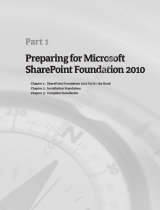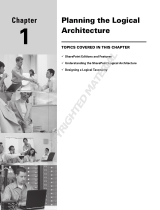
Tree Panel Behavior in Failover Cluster Environments ..................................................................................... 32
Tree Panel Nodes........................................................................................................................................................ 33
Tree Panel Icons.......................................................................................................................................................... 34
Group SharePoint Farm Nodes, Clusters, or Host Nodes................................................................................. 36
About Aliases................................................................................................................................................................ 36
Customize Color Themes................................................................................................................................................ 38
Change the Color Theme for ASM/ME................................................................................................................. 38
Change the Color Theme for the Volume View................................................................................................... 38
Chapter 4: HIT Groups.................................................................................................................39
Overview of HIT Groups..................................................................................................................................................39
ASM/ME Operations on HIT Group Members..................................................................................................... 39
HIT Groups in Non-Cluster Environments.............................................................................................................39
HIT Groups in Cluster Environments...................................................................................................................... 40
Create a HIT Group — Overview..................................................................................................................................42
Prerequisites for HIT Groups....................................................................................................................................42
Create a HIT Group With the Add Hosts Wizard.................................................................................................43
Edit ASM/ME Settings on Hosts in a HIT Group...................................................................................................... 43
Chapter 5: General ASM/ME Operations..................................................................................... 45
About Volumes...................................................................................................................................................................45
View Volume Details................................................................................................................................................... 45
About Thin-Provisioning Volumes in HIT/Microsoft........................................................................................... 46
Operations on Failover Clusters.....................................................................................................................................47
Identifying Cluster Volumes in the ASM/ME GUI................................................................................................47
About Collections...............................................................................................................................................................47
Volume-Based Collections......................................................................................................................................... 47
Create a Collection......................................................................................................................................................48
More Collection Operations...................................................................................................................................... 48
About Schedules................................................................................................................................................................48
Retained Copies or Replicas..................................................................................................................................... 49
Recommendations for Schedule Creation.............................................................................................................49
Constraints for Schedules.........................................................................................................................................49
Schedules in Cluster Environments.........................................................................................................................49
Create a Schedule for Smart Copies...................................................................................................................... 49
Modify a Schedule.......................................................................................................................................................50
Delete a Schedule........................................................................................................................................................50
Enable a Schedule....................................................................................................................................................... 50
Disable a Schedule...................................................................................................................................................... 50
Schedules for Thin-Provisioning..............................................................................................................................50
About Smart Copies.......................................................................................................................................................... 51
Torn Smart Copies...................................................................................................................................................... 52
Requirements for Creating Smart Copies............................................................................................................. 53
Constraints for Smart Copy Operations................................................................................................................ 53
Create Smart Copies.................................................................................................................................................. 54
Smart Copy Properties for Volumes.......................................................................................................................54
View Available Smart Copies.................................................................................................................................... 55
View Smart Copy Details........................................................................................................................................... 56
Smart Copy Validation .............................................................................................................................................. 56
Contents
5





















